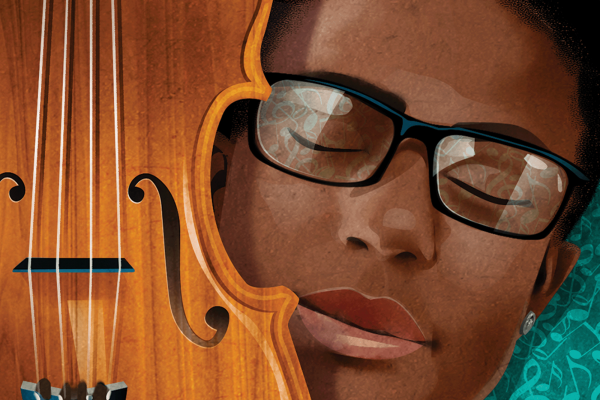Filmmaker Martin Scorsese is no stranger to depicting on-screen violence in his movies, but his latest feature, the historical epic Killers of the Flower Moon, based on David Grann’s book of the same name, feels uniquely brutal in the way its characters so casually dispense their cruelty.
Set in Oklahoma in the 1920s, the film follows the Osage Nation, who are the richest people per capita due to the oil (“black gold” as it’s coined) on their land. In what eventually became known as “the reign of terror,” members of the community were mysteriously and brutally murdered. Rather than frame the film as a whodunnit, subversively, Scorsese makes it clear from the get-go who the murderers are. Surprise, surprise: The white settlers — some of whom the Osage would call friends — are the culprits. They order the death of Osage members with the nonchalance of placing a takeout order, and then go on to express condolences at their funerals. When the Osage raise complaints and even try to investigate the homicides, they are met with indifference by some and violence by others.
Indeed, the real mystery of Killers of the Flower Moon is not who murdered so many Osage people, it’s how these murders can go on for so long — how the loss of life can be dismissed with such apathy. Scorsese grounds these questions in the relationship between Ernest Burkhart (Leonardo DiCaprio), a former World War I soldier, and Mollie (Lily Gladstone), an Osage whose family is blessed with oil-rich land. The two get married, and yet unbeknownst to Mollie, Ernest is an unwitting (and eventually active) pawn used by his uncle William Hale (Robert De Niro), a rancher and friendly benefactor to the Osage people, to murder the members of her household so that Ernest can inherit her family’s wealth.
The Oklahoma Scorsese paints here is his answer to that question of “how?” Scorsese shows that for a place to become at peace with the murder of Indigenous people, yes, it needs the William Hales (i.e. the progenitors of the murders), but it also requires people like Ernest Burkhart, those who poison you while whispering that they love you, those who are so caught up in the belief that they’re doing what’s right that they don’t realize they’re killing you. In Killers of the Flower Moon, we see how evil can thrive in plain sight because of indifference, prejudice, and what I’ve come to understand as “false love.”
Real love, as outlined in 1 Corinthians 13, is patient and kind. Notably, it doesn’t envy — not oil, not land — and it rejoices in the truth. Yet envy and deception are what form the bedrock of Ernest’s relationship with Mollie as he lies about his involvement in her family members’ murders to get her wealth. Perhaps he loved Mollie, but he never loved her how Paul articulates. If anything, Ernest’s “pure and undefiled” devotion is reserved for money (as he shockingly says, “I just love money. I love it as much as I love my wife”).
There has been important discourse about whether Scorsese made the right decision to tell this story not from the perspective of the Osage but from that of the murderers. By making the audience watch through Ernest’s eyes, Scorsese challenges viewers to consider the ways they have been passive about or complicit with violence in their own communities, even while voicing love. Few of us will relate to the blatant maliciousness of William; we are more like Ernest: oblivious to our part in the complicated web of injustice or willingly looking the other way by retreating into our privilege.
Consider the callous ways antisemitic language is woven into how Christians retell the gospel story, or the ways Christians advocate for laws that restrict the rights of LGBTQ+ individuals. Killers of the Flower Moon is an opportunity for Christians to interrogate how we have participated in this violence of indifference, and in what ways we harm the communities around us in the name of false love.
There are two scenes that underscore Ernest’s fickle allyship. In one of the film’s quieter moments, Mollie invites Ernest into her home for the first time. When it starts to rain, Ernest quickly goes to shut an open window, but Mollie tells him to stop, saying, “The storm it’s uh- well it’s powerful …. We need to be quiet for a while.” As the rain patters, the two sit still for a moment while the camera focuses on their expressions. Eventually though, Ernest begins to start chatting to fill the void, and Mollie tells him again to be silent. So much of love is paying attention, being present with someone even when you don’t know what to say, humbling yourself to step into and learn from the person you love. From the start, Ernest struggles to do this. And later, when one of Mollie’s sisters is murdered, Ernest goes to get a casket for his sister-in-law. Upon seeing the price, he berates the store owner for charging him “Osage prices” (that is, significantly higher than what a white person would be charged). Ernest marrying into Mollie’s family has done little to nothing when it comes to how he views the Osage. He’s offended that he, a white person, would be possibly seen as a member of the Osage community. Ernest wants the monetary capital of the Osage but the cultural capital of the white settlers. Over and over the film returns to this maddening contradiction: He loves Mollie, but he also looks down on her and her people.
In Killers of the Flower Moon, we see a community at its worst, where violence against Indigenous communities is backed up by the power of the government and fortified by the indifference — or the delusion — of locals. Across its nearly three-and-a-half-hour runtime, it’s difficult to see so many grisly scenes and thoughtless murders of the Osage. For those of marginalized identities, the film can be especially disturbing as it proves that you make a perfect target for those in power: No one cares if you go missing, and attaining wealth does not shield you from bigotry and greed. This type of casual, cruel eradication is not just a thing of the past.
Today, in Oklahoma, under a state measure, teachers have shared how they’re not sure if they are even allowed to teach Killers of the Flower Moon (both the book and the film) in class. Under state measure HB 1775, schools are prohibited from teaching on texts where “an individual, by virtue of his or her race or sex, is inherently racist, sexist or oppressive, whether consciously or unconsciously.” The legislation also prohibits school employees from teaching that “[a]ny individual should feel discomfort, guilt, anguish or any other form of psychological distress on account of his or her race or sex.” Book bans and measures like HB 1775 are often presented as ways to “protect” minors and children from inappropriate content, but, as Liz Charlotte Grant wrote for Sojourners, “the law actually restricts access to books containing themes dealing with race, gender, and sexuality.” These acts of erasure are often spearheaded by Christians.
There’s an eerie parallel between the Oklahoma of the 1920s and the U.S. of 2023. Both then and now, we see communities and their stories extinguished by those in power — neighbors who espouse love with their lips, though their hearts are set on violence. Killers of the Flower Moon reminds us that the end goal of indifference leads not to peace, but annihilation.
Got something to say about what you're reading? We value your feedback!







